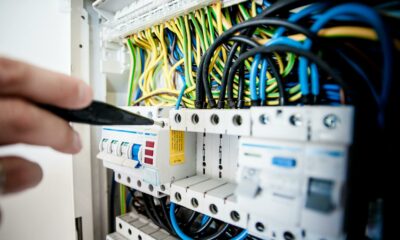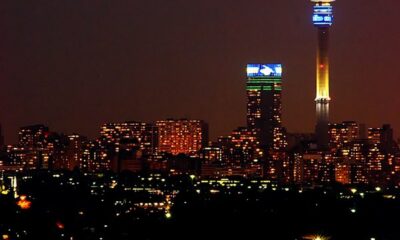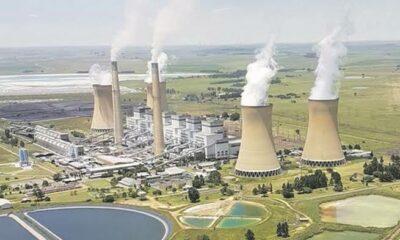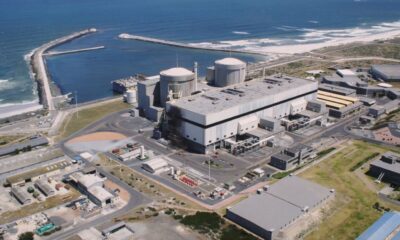Business
Eskom’s R16 Billion Profit: A Win on Paper, Paid for by Taxpayers

The Big Turnaround, With a Caveat
Let’s imagine that Eskom’s turnaround is like a poor sprinter who suddenly wins the race, only to find out someone else pulled him forward. In FY 2025, Eskom announced an after-tax profit of R16 billion, a dramatic flip from its R55 billion loss just a year earlier. On paper, this is the kind of comeback story you’d see in headlines.
But economists at the Bureau for Economic Research (BER) are waving red flags. Their argument? This seemingly heroic bounce back owes more to taxpayer-funded injections, tariff increases, and diesel rebates than to internal operational brilliance.
Three Pillars Propping Up the “Profit”
1. Electricity Price Hikes
In 2024/25, Eskom’s tariff rose by 12.5 percent. To put that in context, South Africans have endured about 600 percent increases in electricity pricing over the past decade. This year’s hike pushed up revenue, mostly at the expense of struggling households and businesses. And it’s not calming down: coming years may see another ~9 percent rise, outpacing inflation by far.
2. The Diesel Rebate Windfall
When Eskom burns diesel for power generation, it qualifies for a rebate on the Road Accident Fund levy built into diesel costs. In the year to March 2025, that rebate came in at R12 billion. But here’s the catch: as Eskom reduces its reliance on diesel, that rebate shrinks, so this boost may not last.
3. Massive Bailouts to Ease Interest Burdens
A chunk of Eskom’s survival strategy was lowering its finance costs by about R5 billion, a benefit of a R64 billion taxpayer bailout. The BER estimates that without those bailouts, Eskom’s books would show a R38 billion cash shortfall. In other words, the lights stayed on partly because your wallet chipped in.
The Shadow Side: Debt, Arrears, and Fragility
While Eskom basks in its “profit,” structural cracks are widening beneath. Auditors have flagged serious “going concern” concerns. Why? Eskom still leans heavily on government guarantees, assumes stable regulatory revenue, and cannot contain municipal non-payment and energy losses.
Speaking of which, municipal arrear debt stood at R94.6 billion by March 2025, a 27 percent jump from the year before. By August 2025, it swelled to R103.5 billion. If that trajectory continues unchecked, Eskom itself predicts municipal debt could top R300 billion by 2030.
Eskom’s CEO, Dan Marokane, cautioned in media comments that should debt trends persist, they may again turn to National Treasury, and, in turn, taxpayers, for another lifeline.
The Public Pulse: Frustration and Distrust
On social media and in everyday conversations, people are weary. Many argue that Eskom’s narrative of “sacrificing” to restore reliability hides the more uncomfortable truth: South Africans are being squeezed multiple times, via tariff hikes, tax-funded bailouts, and debt assumptions. A common refrain: if “profit” is built on passing the Buck, does it count?
In Parliament, opposition voices are demanding stricter oversight. Civil society groups urge a radically different approach: tie bailouts to structural reform, hold municipalities accountable, and shift more aggressively toward cleaner, decentralised energy solutions.
Why This “Profit” Should Worry You
At a glance, a state utility turning around is good news. But the foundation here is shaky. Eskom’s so-called success depends heavily on external props, props that involve your taxes, your monthly electricity bill, and your trust in institutions that manage your essential services.
If municipal debt keeps rising and tariffs keep outpacing inflation, the next shock, regional blackouts, rising business closures, or fiscal stress, won’t be far behind. Without decisive, structural fixes, this profit could serve only as a momentary illusion.
Eskom is walking a precarious line. It’s time to push for deeper change, not just applause for temporary gains.
Also read: Airlink Fleet Expansion: New Embraer E195-E2 Jets and Competition Tribunal Challenges
Follow Joburg ETC on Facebook, Twitter, TikT
For more News in Johannesburg, visit joburgetc.com
Source: Business Tech
Featured Image: Democratic Alliance



























